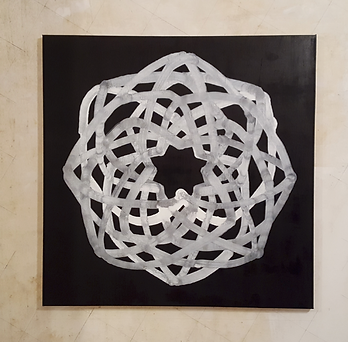Marie Cloquet
TRAVELING LIGHT
08/09/2019 - 20/10/2019
Marc Rossignol
Synchrone
Opening Sunday 9 September 2018
Marc Rossignol
Synchrone
Opening Sunday 9 September 2018
Marc Rossignol
Synchrone
Opening Sunday 9 September 2018
Marc Rossignol
Synchrone
Opening Sunday 9 September 2018
Herman Van Ingelgem
Foreign Bodies & Protheses
06/09/2021 - 17/10/2021
Annie Gentils Gallery – www.anniegentilsgallery.com
Marc Vanderleenen - Current Affairs
Every exhibition presents a state of affairs, a snapshot of what the artist is thinking of at a particular moment in time, of the questions he or she wants to address, the stories he or she is experiencing or reading, without for that matter wanting to disclose them.
Marc Vanderleenen works every day—from nine to five or thereabouts. He produces sketches as if he were drawing on for example beer mats or in a diary. Often he explores the same figures, motifs or themes, time and again, until he gets tired of them. The sketches are schematic, but not cursory. Sometimes it takes quite a while before the image really unfolds and turns out how it should—in its essence and freshness. Likewise, the small works—‘In large works I lose too much,’ as he once stated—also demand time from the spectator. There is no gravitational pull, the painting does not right away absorb the gaze, does not require our undivided attention. But upon approaching the image—in Vanderleenen’s typical dull grey, beige and green hues—it allows itself to be touched and read prudently. But it never allows itself to be fathomed.
The artist finds it important to delimitate his image with thick or less thick lines, or sometimes —perhaps unconsciously?—by letting show through the white edge of the canvas. Thus, the images become a painting, not ‘a window onto the world’. He is careful not to show a clear narrative. His aim is not to register reality, but to reduce it to an abstract essence. For example, the flowers he painted during the lockdown, are not existing flowers, but represent the idea of a flower. His palette, too, contributes to a painterly indistinctness, an existential goo, a fundamental being out of focus.
This abstraction and sketchiness goes hand in hand with a particular sense of uneasiness. We are not used to looking at images that do not make the first move, that effortlessly conceal and without any pretence function like a painting that goes back to an essential humanity. Vanderleenen’s characters are situated between actions. People sitting, silently anticipating, or several characters that only just seem to miss each other, separated by a mere brushstroke. There is a sense of an imminent or only just missed interaction, of an encounter that just failed to take place. These expectant attitudes sometimes hide references to other artists, such as Magritte or Cézanne. Where for example the latter depicts a reclining male nude, probably essentially to practise and display his anatomical skills, Vanderleenen turns the figure in a leaning outline, a shadow that draws attention through its posture. Yet, there is no way to find out for sure whether the character is waiting for something, or sleeping it off, or is simply dead.
This being in-between, these in-between attitudes and in-between events, all relate to Vanderleenen’s interest in the witness. Also from a number of personal experiences, the artist’s awareness grows that history is only one part of the narrative. History is handed down the way it has been written, but usually the people writing are not the real witnesses. The latter are hidden in the shade, perhaps waiting. (What are they waiting for? For a new event? For a voice?) History goes by and branches off, just like Vanderleenen’s oeuvre. And just like history, his oeuvre is linked by witnesses in the dark.
As the son of a librarian, Vanderleenen has always read a lot. He has also written himself, usually under a nom de plume, and he was co-founder of the magazine De Brakke Hond. He sketches like his thoughts flow, and I dare claim that his visual art, too, has a literary quality. His oeuvre develops like an uninterrupted stream of consciousness, a stream of ideas like the stream meandering in our mind we became familiar with as a literary style in the writings of authors such as James Joyce and Marcel Proust. There is no clear line, no narrative, but there is the experience, this very near, recognizable humanity. Just like a stream of ideas may be incoherent, yet recognizable, Vanderleenen’s characters—in their sketchy essence and from the direct stream between the artist’s thoughts and his canvas—are capable of establishing a profound emotional tie with the spectator, stirring a touch of empathy because of their through and through humane form.
Tamara Beheydt, March 2022
.png)
.png)


